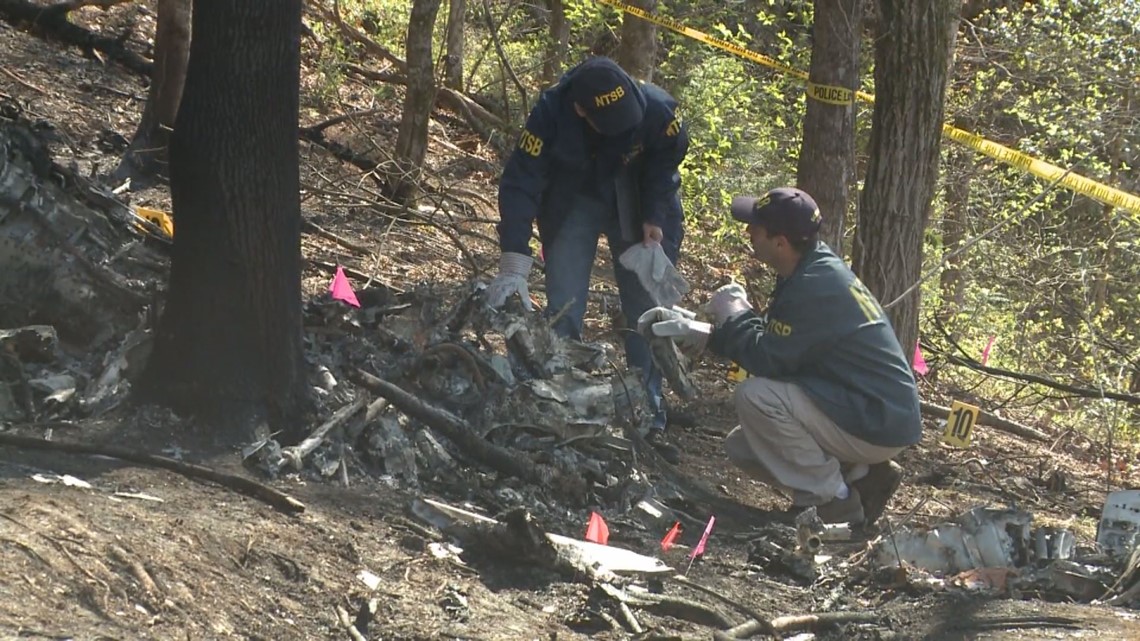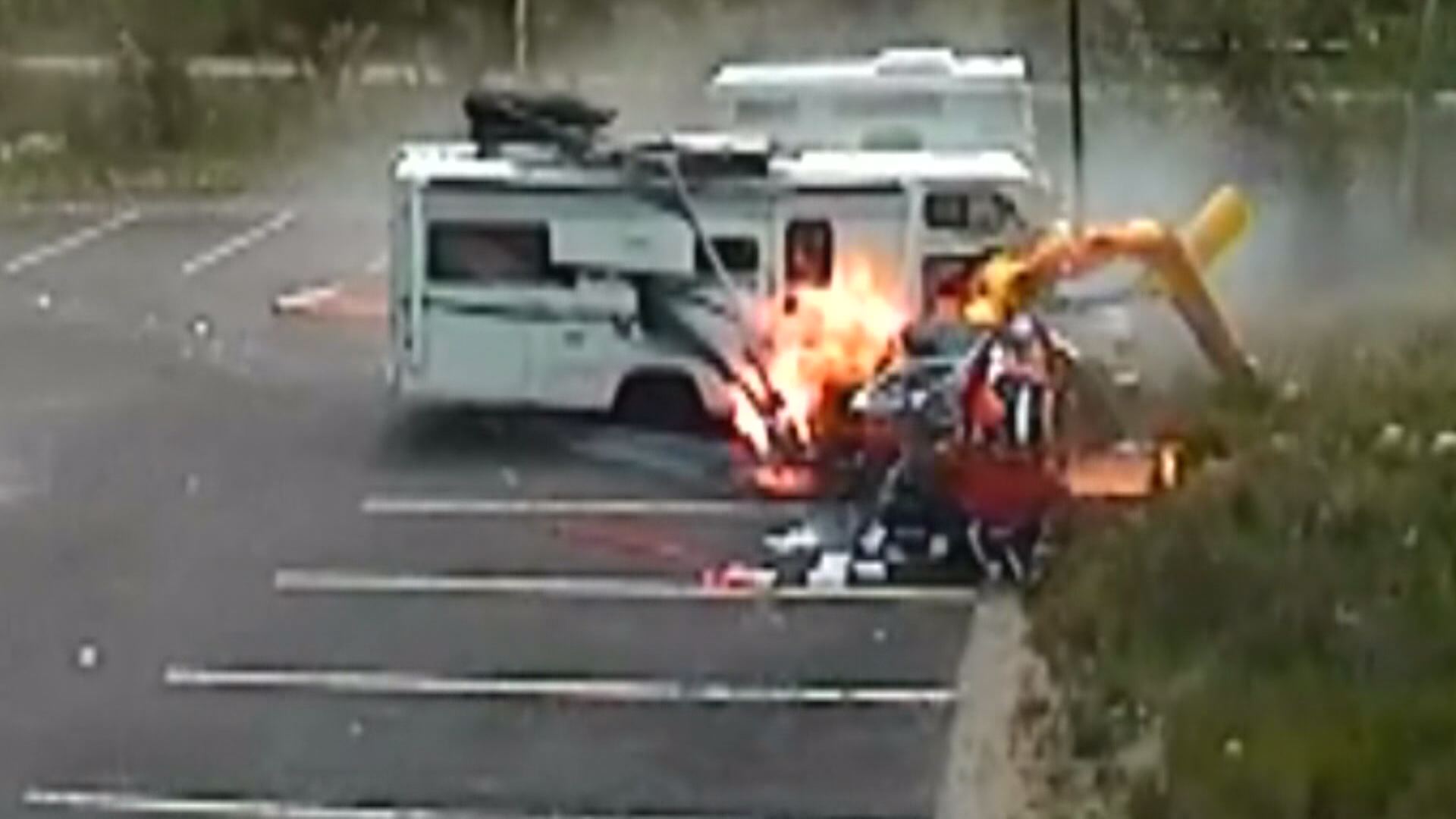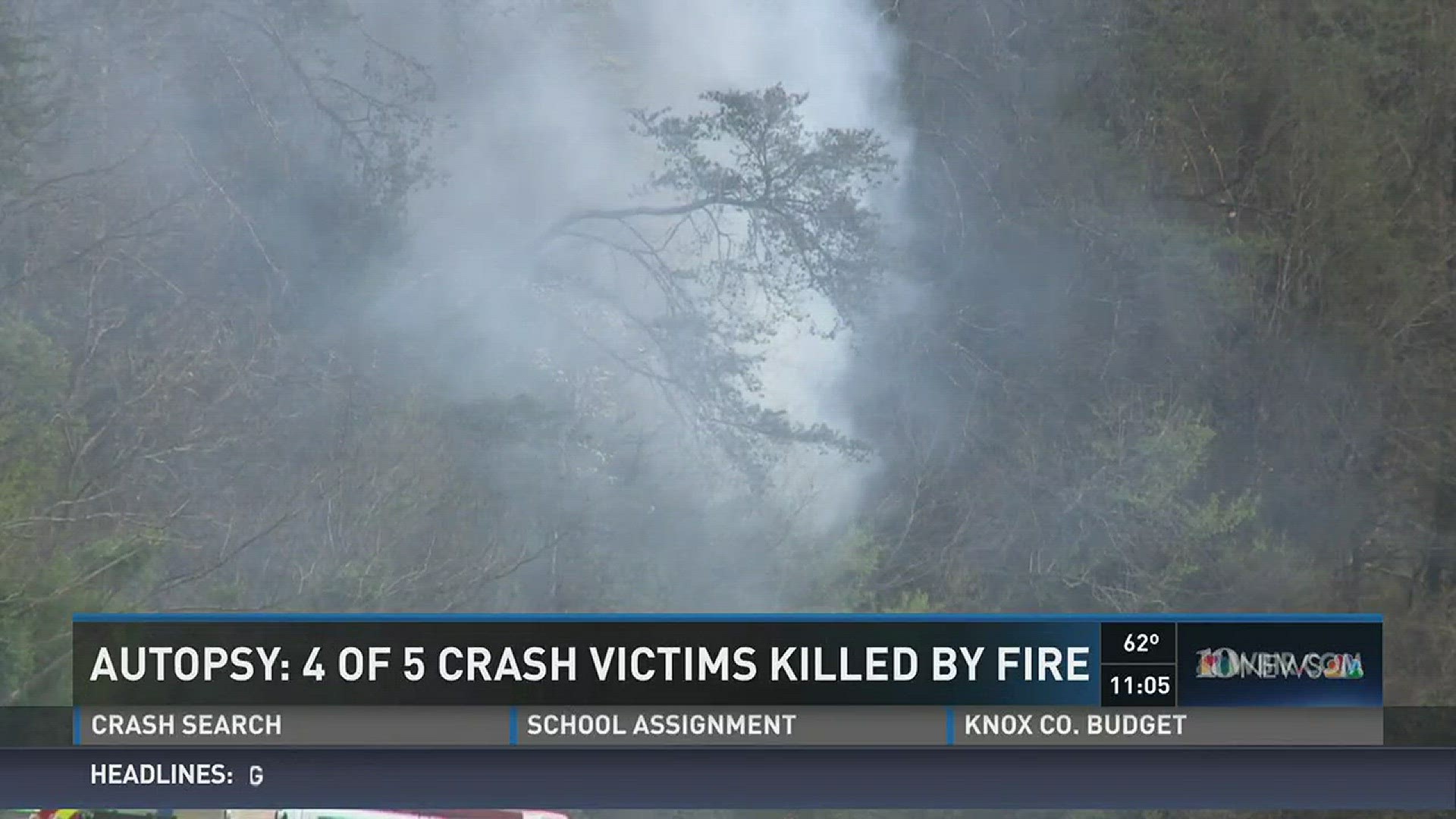(KNOXVILLE) Four of the five people who died in last month's Pigeon Forge tourist helicopter crash suffered fatal burns or fatal fire-related injuries, autopsy records show.
Pilot Jason Dahl, 38, Parker Rasmussen, 18, his 22-year-old sister Peyton Rasmussen, and Michael Mastalez, 21, suffered fire-related injuries after the Bell 206L helicopter went down April 4, according to reports from Dr. Christopher Lochmuller of the Regional Forensic Center.


Johna Morvant, 49, the mother of the Rasmussens, suffered "multiple blunt trauma," according to the autopsy report signed by Lochmuller. Morvant was from Kodak, the Rasmussens lived in Huntersville, N.C., and Mastalez, Peyton's boyfriend, was from Prosper, Texas.
Witnesses found Dahl, still alive, about 20 feet from the wreckage of the Smoky Mountain Helicopters aircraft. Dahl, who suffered burns over most of his body, died moments later, however.
The autopsy concluded he died of "thermal injuries."
The four who died from fire-related injuries were identified through comparison of dental records, records show.
The autopsy report also found there were no drugs or alcohol in the pilot's system -- just caffeine.
"It's long been said that aviation laws and rules are written in blood, and that's not far from the truth," said Randy Safewright, an airline pilot and former crash investigator.
Safewright added that many helicopters lack what's known as a crash-resistant fuel system, designed for hard landings.
"It's not uncommon for the skids to give out and then the fuel bladder will rupture," said Safewright.
The fact that four people were alive after the impact shows the crash may have been survivable, if not for the fire.
At this point, it's unclear if the Bell 206 chopper had a crash-resistant fuel system, but a 10News Investigation has uncovered that since the 90s, in fatal crashes involving the 206, fire played a role in 26 percent.

In video of a 2014 medical helicopter crash in Colorado, 10News found it took just three seconds for fuel to spill and a fire to spread after impact.
The National Transportation Safety Board is investigating the Pigeon Forge crash. Investigators said last month it appeared the chopper clipped the top of a ridge before going down, and they indicated it may have had mechanical problems before it crashed.

Morvant had gone up with her children and Mastalez on a brief sightseeing trip the afternoon of April 4. With Dahl at the controls, the aircraft had taken off from the operator's Highway 66 headquarters across from Wilderness in the Smokies.
On the day of the crash, another pilot had taken the Bell 206L on 10 flights that morning, and Dahl had made four trips in the afternoon.
No problems had been reported with the aircraft. Winds at times that day had been gusty.
It could be about a year before the official NTSB report is released.
Outlet Malls on the Parkway.

The helicopter clipped trees on a ridgeline, then landed in a wooded area and burst into flames. Much of the aircraft and surrounding area were burned.
Investigators were able to examine several parts of the helicopter that survived the fire, and noted no obvious mechanical issues. They noted that some of the equipment did "not display evidence of fractures or deformation consistent with power at impact."
All of the wreckage was removed to a Tennessee warehouse where it will be further examined.
The report noted the weather at the time of the flight, but did not indicate if that was a contributor to the crash.

